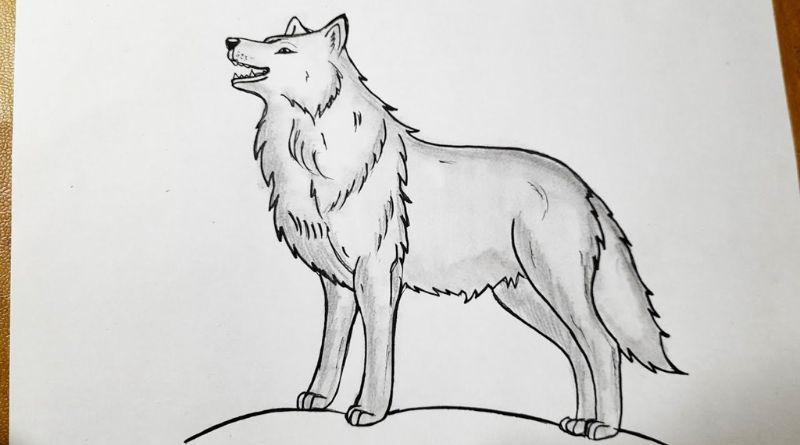Drawing a wolf can be a thrilling and engaging artistic endeavor. Known for their majestic appearance and symbolism, wolves capture the imagination of many artists. Whether you’re a beginner or an experienced illustrator, this guide will walk you through the steps of drawing a wolf, provide useful tips, and address some frequently asked questions.
Table of Contents
Step-by-Step Guide to Drawing a Wolf
Step 1: Gather Your Materials
Before you start, make sure you have the following materials:
- Drawing paper
- Pencils (HB and 2B recommended)
- Eraser
- Optional: Colored pencils or markers
Step 2: Start with Basic Shapes
Begin your drawing by sketching basic shapes to outline the wolf’s form:
- Head: Draw a circle for the head.
- Body: Add an elongated oval shape for the body, tilted slightly to give it movement.
- Legs: Sketch four straight lines for the legs, noting that the front legs should be slightly longer than the back ones.
Step 3: Refine the Outline
Once you have your basic shapes, start refining the outline:
- Facial Features: Add the snout by drawing a protruding triangle at the front of the head. Include the ears, which can be triangular and upright.
- Body Shape: Connect the head to the body with smooth, flowing lines. Make the back slightly arched for a more dynamic look.
Step 4: Add Details
At this stage, begin adding details to your wolf:
- Eyes: Draw two almond-shaped eyes. You can add detail by making the pupils round.
- Nose: Draw a small, rounded triangle at the end of the snout.
- Fur Texture: Use short, jagged lines to indicate fur, especially around the neck, face, and tail.
Step 5: Outline and Define Features
Once you’re satisfied with your sketch, go over it with a darker pencil or pen to define the outlines. Make sure to highlight important features like the ears, snout, and tail.
Step 6: Shading and Texture
To add depth to your drawing:
- Use shading techniques to create the illusion of volume. Darken areas under the belly, between the legs, and around the face.
- Use different pencil pressures to create varied textures in the fur.
Step 7: Color Your Wolf (Optional)
If you want to add color, choose shades of gray, brown, and black for a realistic look. You can also use white for highlights. Blend colors to create a more lifelike appearance.
Tips for Drawing Wolves
- Study Reference Images: Look at photographs or illustrations of wolves to understand their anatomy and unique features.
- Practice Different Poses: Try drawing wolves in various poses, such as howling, running, or resting, to improve your versatility.
- Experiment with Styles: Whether you prefer realism, cartoonish styles, or abstract designs, explore different approaches to find what resonates with you.
FAQs About Drawing Wolves
1. What is the best way to start drawing a wolf?
Start by sketching basic shapes to outline the wolf’s structure, and then gradually refine the details. This approach helps with proportions and makes the process manageable.
2. How can I make my wolf drawing more realistic?
Focus on details like fur texture, shadows, and the wolf’s posture. Studying real wolves or high-quality images can help you capture their unique characteristics.
3. What materials do I need for drawing?
You’ll need drawing paper, a set of pencils, an eraser, and optional coloring tools like colored pencils or markers.
4. How can I improve my wolf drawing skills?
Practice regularly, study different wolf images, and try drawing them from various angles to develop your skills and confidence.
5. Are there specific techniques for coloring a wolf?
Yes! Layer colors to achieve depth, use blending for a smooth texture, and consider the light source when adding shadows and highlights.
Conclusion
Drawing a wolf can be an exciting and fulfilling artistic challenge. By following these steps and tips, you can create captivating wolf illustrations that showcase your creativity. Remember to practice and enjoy the process, as each drawing is a step toward improving your skills!
